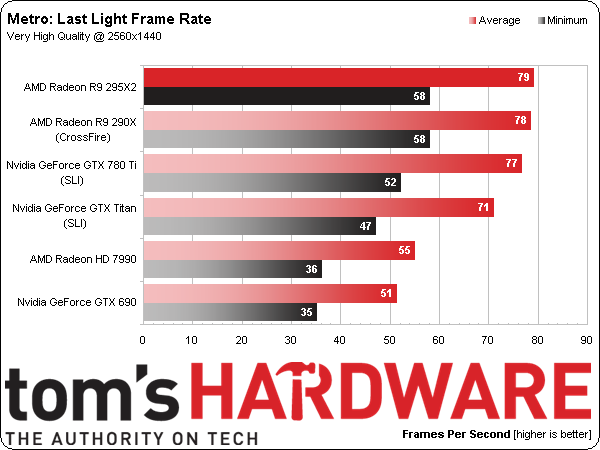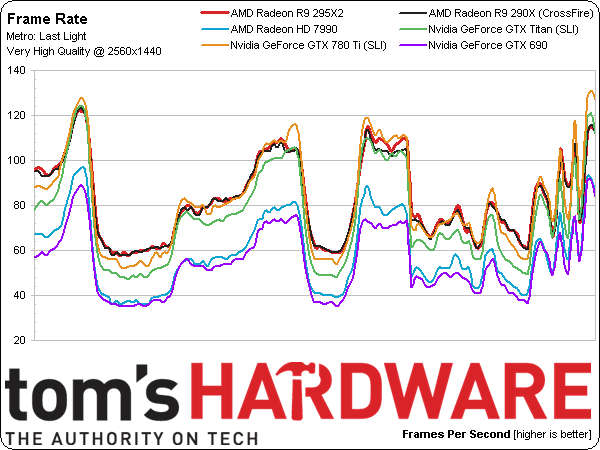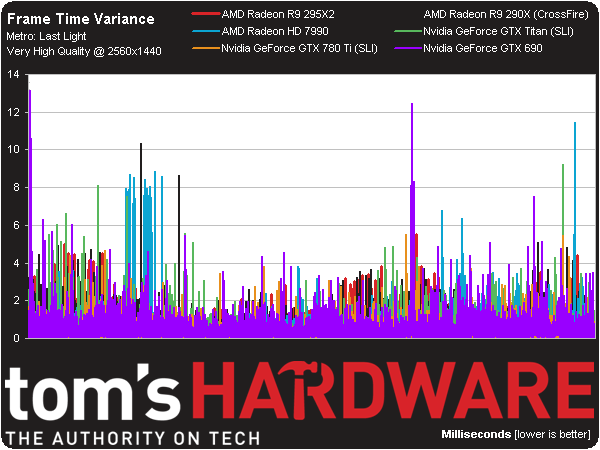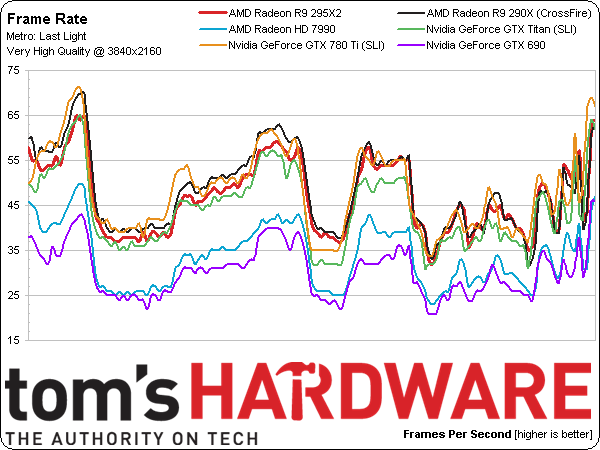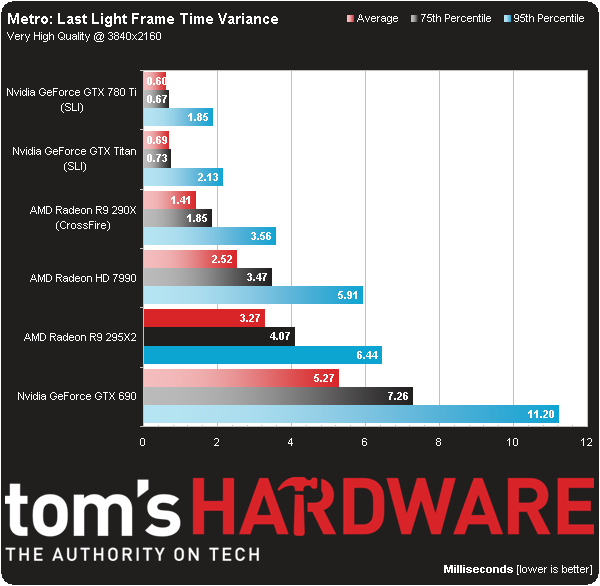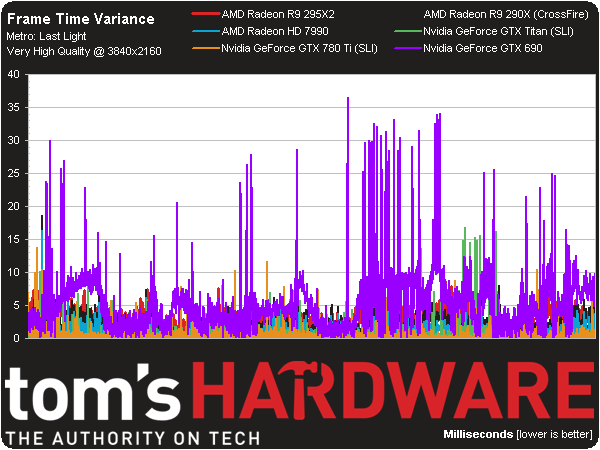Radeon R9 295X2 8 GB Review: Project Hydra Gets Liquid Cooling
“Do you have what it takes?” AMD asks, purportedly referring to the big budget and beefy power supply you need before buying its new Radeon R9 295X2. We benchmark the 500 W, dual-GPU beast against several other high-end configs before declaring a winner.
Results: Metro: Last Light
2560x1440
Two potent Hawaii GPUs allow the Radeon R9 295X2 to score a win in Metro: Last Light at 2560x1440. The R9 290Xes in CrossFire are right behind, followed by two Nvidia configurations in SLI.
As we’d expect, the Radeon HD 7990 and GeForce GTX 690 bring up the rear, though they continue to facilitate playable frame rates.
The frame rate over time chart shows the two slowest boards falling under 40 FPS. Otherwise, their performance is commendable.
Low frame time variance concurs with results from other games: both AMD and Nvidia show consistency in the rate at which frames are delivered on-screen.
It looks like most of the spikes in our frame time sample come from AMD’s Radeon HD 7990 and Nvidia’s GeForce GTX 690. But they’re not bad enough to cause problems with the game’s smoothness.
3840x2160
Metro: Last Light is notoriously graphics-bound, and it successfully keeps four of the most powerful GPU arrays under an average of 50 FPS at 3840x2160 using the Very High preset. Fortunately, those same configurations also maintain minimum frame rates above 30, yielding a marginal, but still playable experience.
Charting frame rate over time shows just how close two GeForce GTX 780 Tis and a pair of Hawaii GPUs come to mirroring each other’s performance.
Get Tom's Hardware's best news and in-depth reviews, straight to your inbox.
The biggest frame time variance issues come from Nvidia’s GeForce GTX 690. Otherwise, the results we measure are indicative of AMD’s frame pacing feature working to prevent the dropped and runt frame issues we started quantifying almost a year ago.
-
Marsian Gustrianda Many people doubt about Dual GPU Hawaii will be Blow Up. It seems AMD really do well job. Nice Looking CardReply -
ohim This card is like the Veyron of WV , show the world what you can do (R295x2) but you`ll still relay on the sales of your WV Golf for revenue (270x, 280x)Reply -
outlw6669 Impressive performance, temperatures and fairly low noise!Reply
I would prefer a bit lower price, but this looks like a great card for the gamer that has everything! -
gunfighter zeck the name Dreadnaught originated from Dread Nothing or, fear nothing.Reply
Boss ship. -
Maxamus456 Hope this price stays low and not get bloated from bit con miners like its predecessors.Reply -
blubbey So let me get this straight. It runs pretty cool, quiet, performs well and (for the moment) is able to play a good selection of games at 4k admirably and is priced competitively. Plus if you are going to drop a bit more on watercooling your GPUs (which is a possibility if you're spending $1200+) that gives this card even greater value. Nice work AMD.Reply -
marciocattini Wheres Tom's Hardware seal of approval? =( clearly this card diserves some love!Reply
